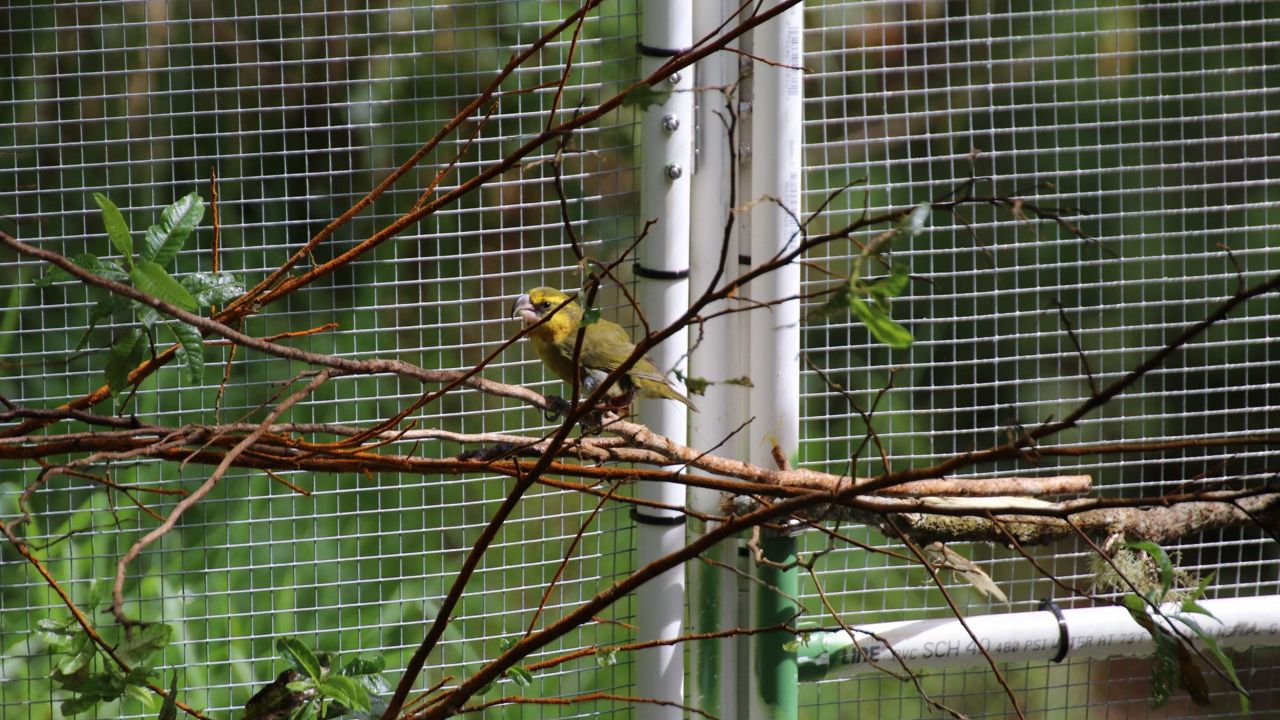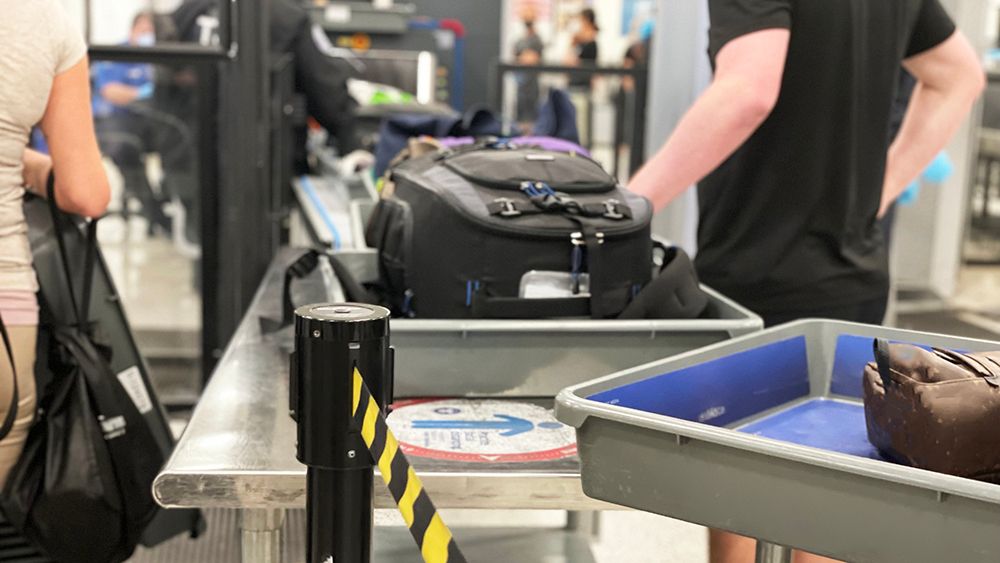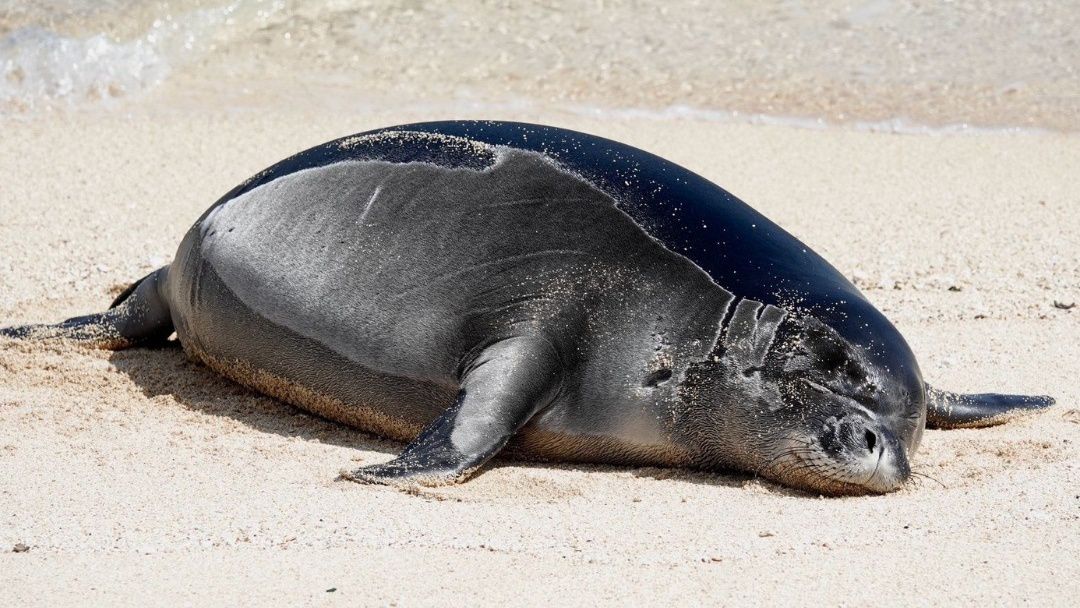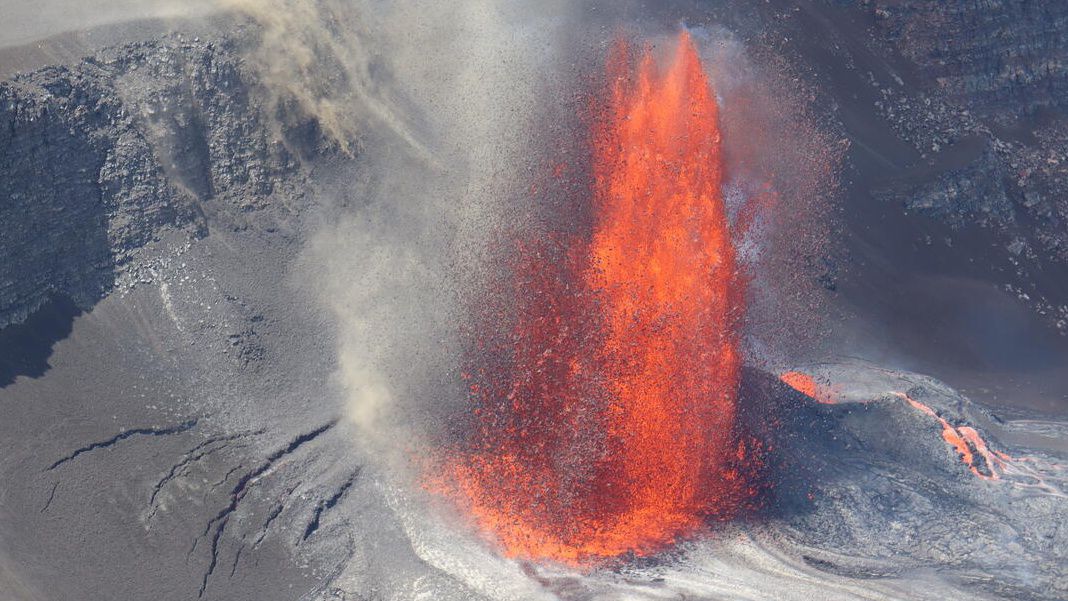For evidence of the immediate effects of climate change, bird lovers need look no farther than Hawaii's upper-elevation forests, where an expansion of mosquito-friendly habitat has led to the spread of avian malaria that now threatens to push four native honeycreepers to extinction.
Last week, the University of Hawaii Cooperative Studies Unit Center, with U.S. Geological Survey Pacific Island Ecosystems Research Center, the U.S. Fish and Wildlife Service and the U.S. Department of the Interior’s Office of Native Hawaiian Relations released a report outlining in grim detail the state of the endangered birds and their native habitat.
The report draws from the expertise of biologists from numerous organizations as well as Native Hawaiian bio-cultural experts to inform conservation managers working to develop emergency management policies to prevent the extinction of ‘akikiki, ‘akeke‘e, kiwikiu and ʻākohekohe.
As the authors of the report note, populations of these native birds have steeply declined over the last two decades. Likewise, their habitats have become more limited as they move into higher and higher elevations to avoid disease-carrying mosquitoes.
There are fewer than 45 ‘akikiki left in the wild on Kauai. Their range has been reduced by about 68%. Forty-one birds are in captivity.
Only 135 kiwikiu survive on Maui, where their livable range has been diminished by 41%. Two kiwikiu live in captivity.
Biologists warn that the two species could disappear in as little as two years.
In addition, there are 638 ‘akeke‘e in the wild and seven in captivity. Their range has been reduced by 60%.
On Maui, 1,657 ʻākohekohe survive in the wild in habitats that have shrunk by 61%. There are no ʻākohekohe in captivity.
“In the long-term, the threat posed by invasive, non-native mosquitoes and avian malaria must be addressed,” the report stated. “Until avian malaria can be stopped from spreading, all native forest birds will be at risk of disappearing.”
While the report does not endorse any course of action, it evaluates three principal ways of addressing the problem: eradicating mosquitoes in the birds’ habitats, bringing birds into captivity until mosquitoes can be controlled; and moving the birds to disease-free forests.
“While most participants thought immediate steps are warranted to prevent species extinction, they also felt that the welfare of individual birds in their natural environment supported by Native Hawaiian cultural practitioners is equally important,” said Stanton Enomoto, the Office of Native Hawaiian Relations senior program director. “It’s akin to ‘ohana supporting an ill family member undergoing treatment here in Hawaii. ‘Ohana support for these bird species not only enhances their chance for recovery, but it sustains the biocultural relationship and preserves their legacy in the event they decline towards extinction.”
Michael Tsai covers local and state politics for Spectrum News Hawaii.









